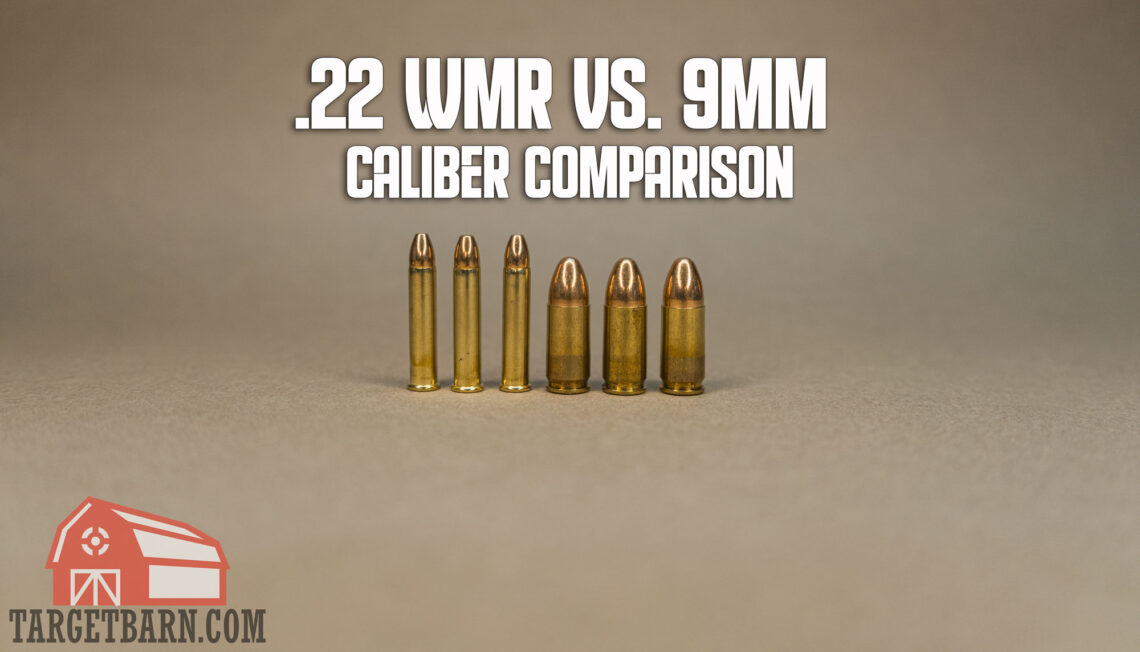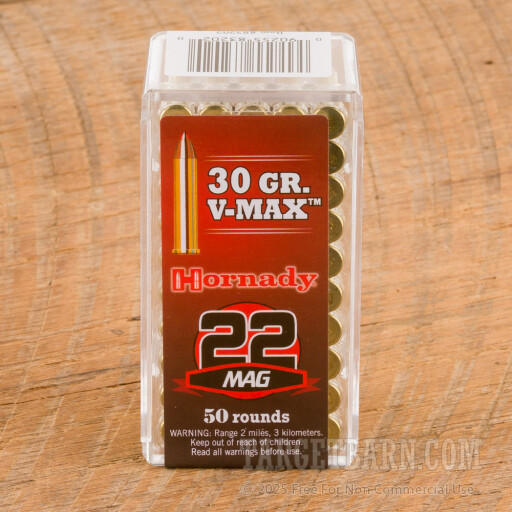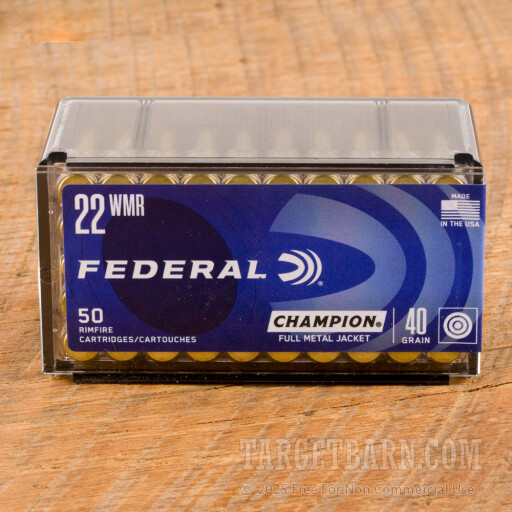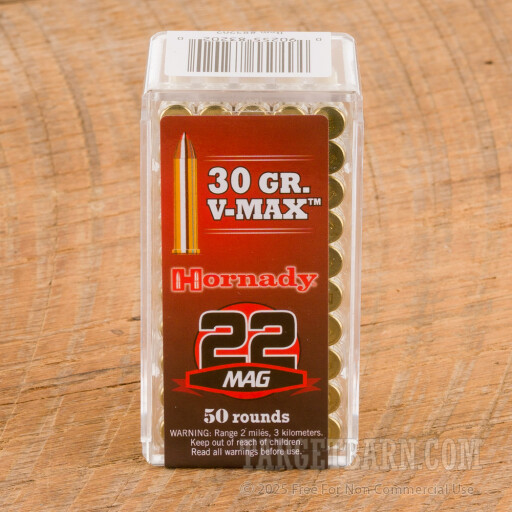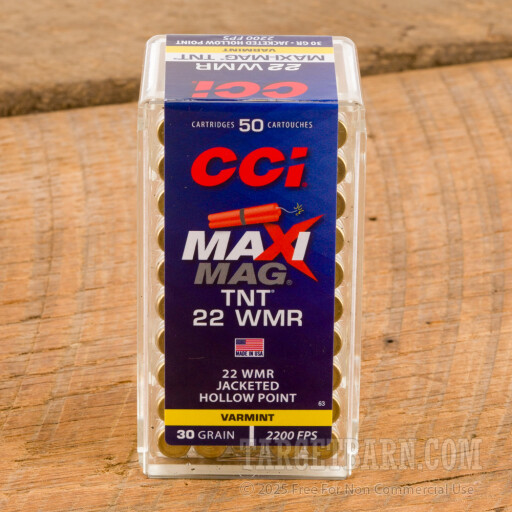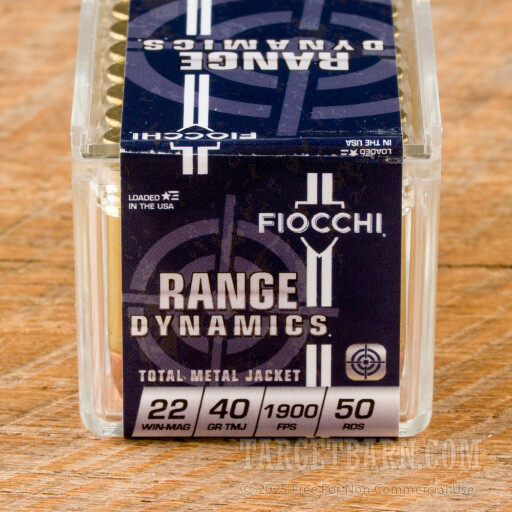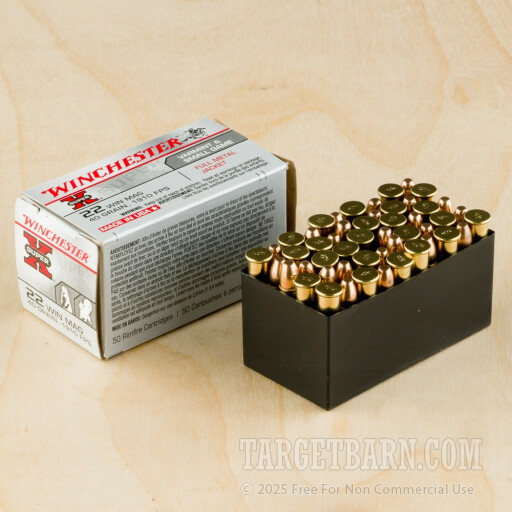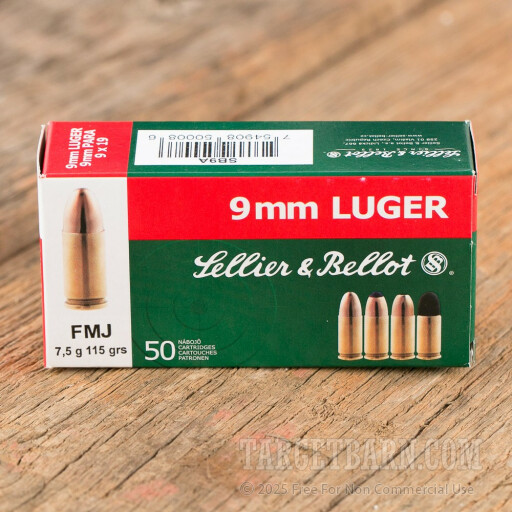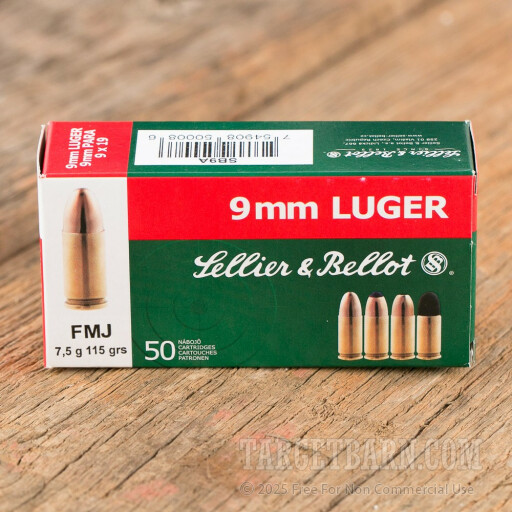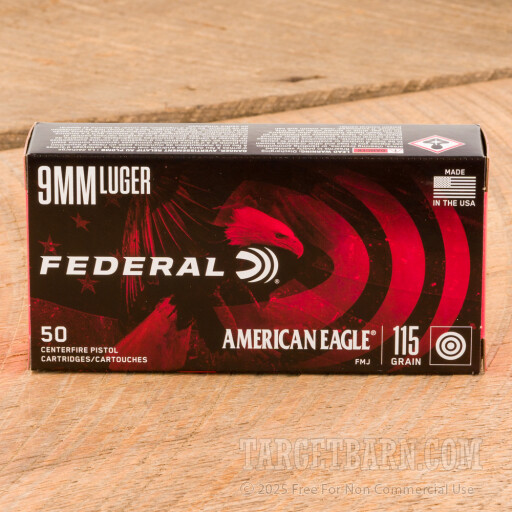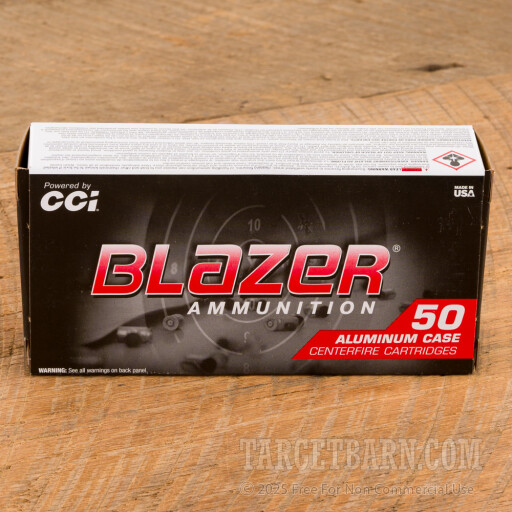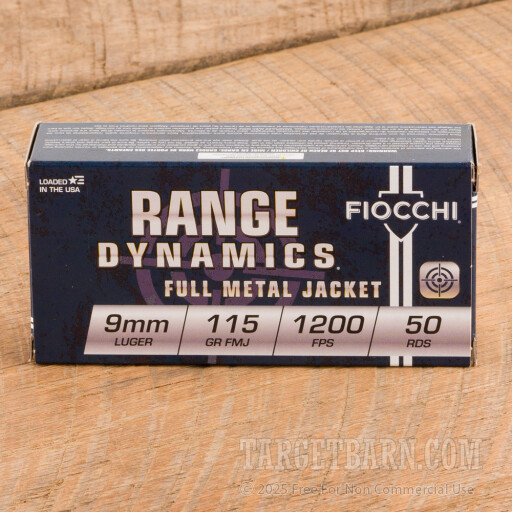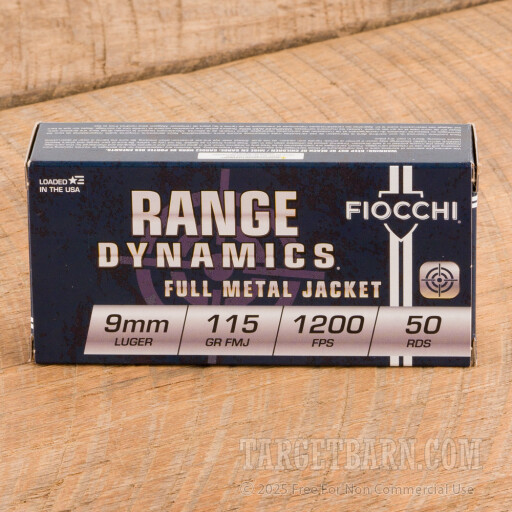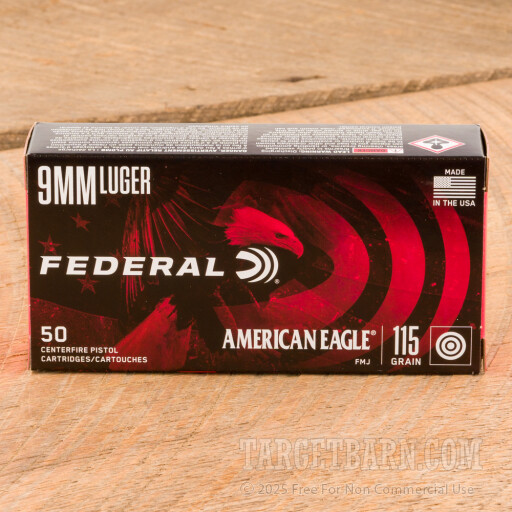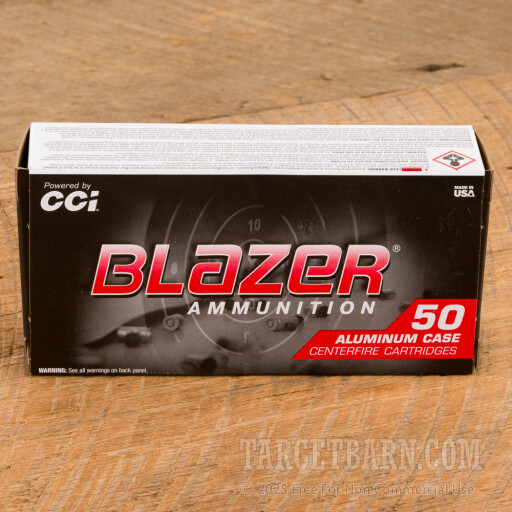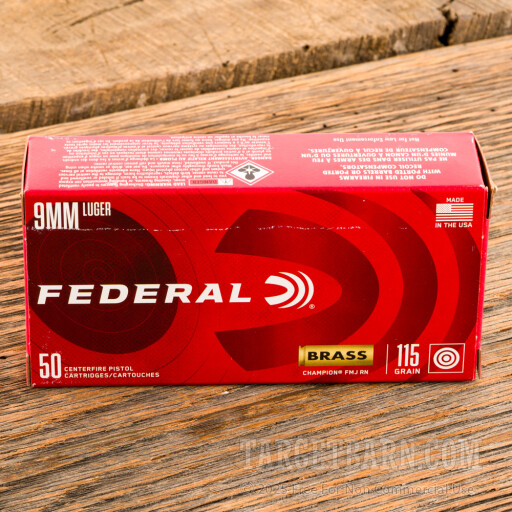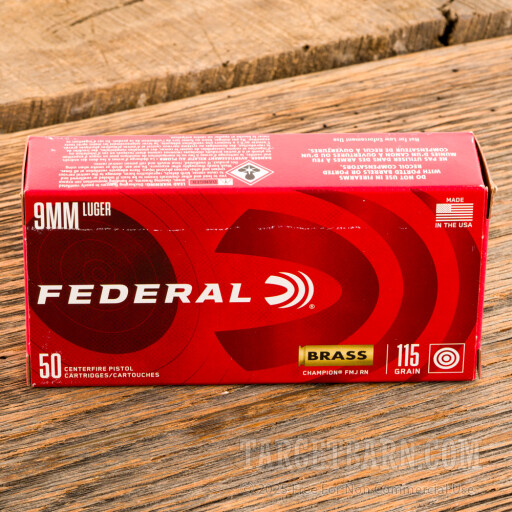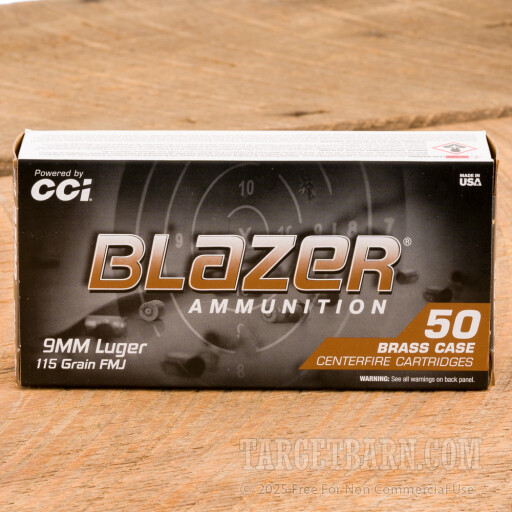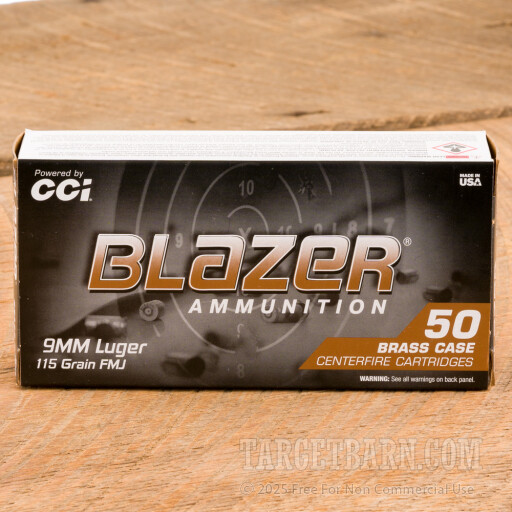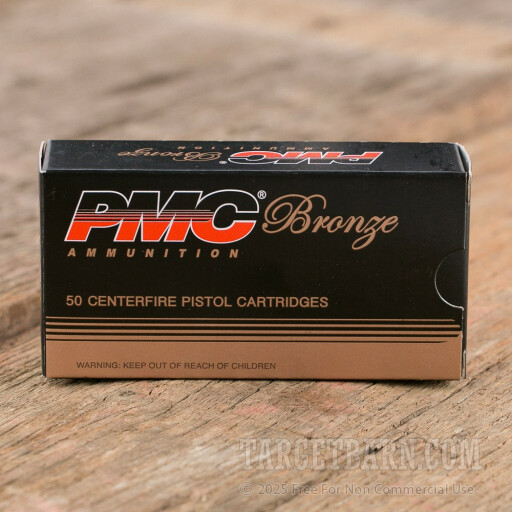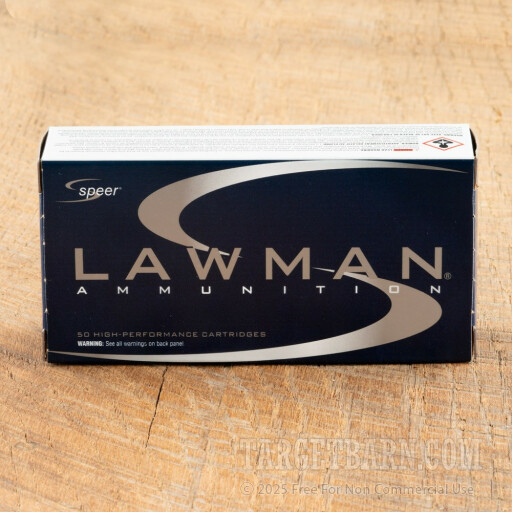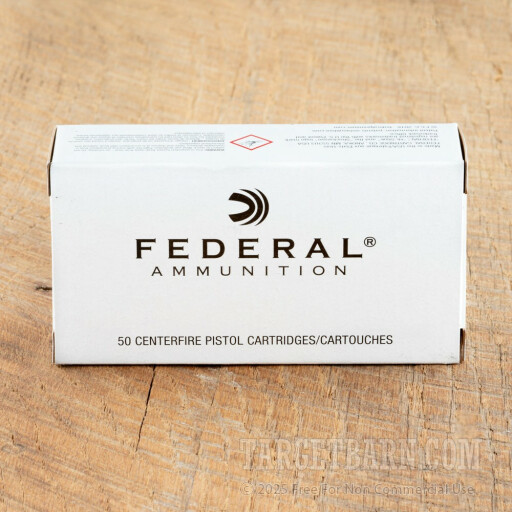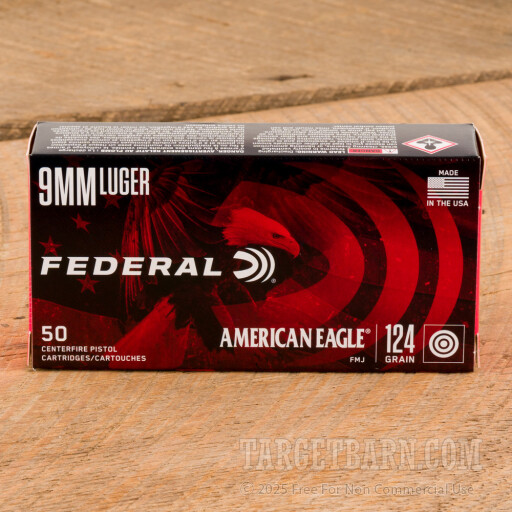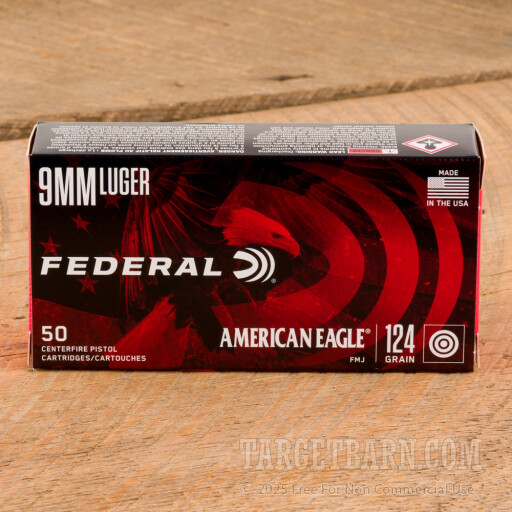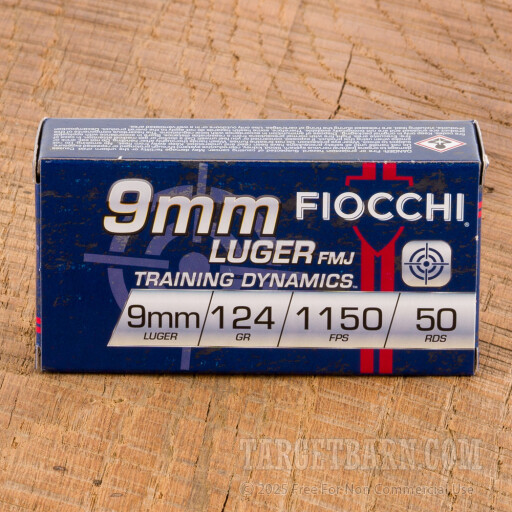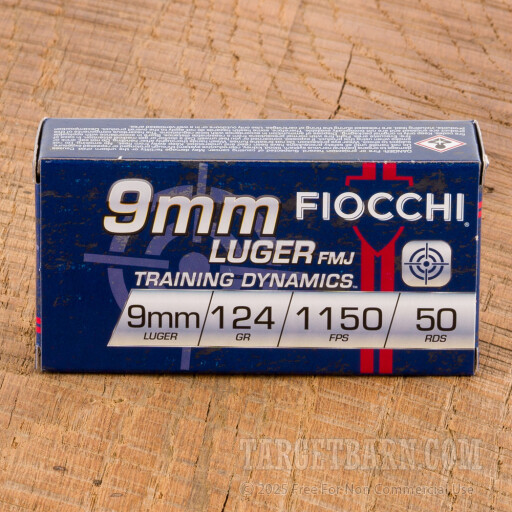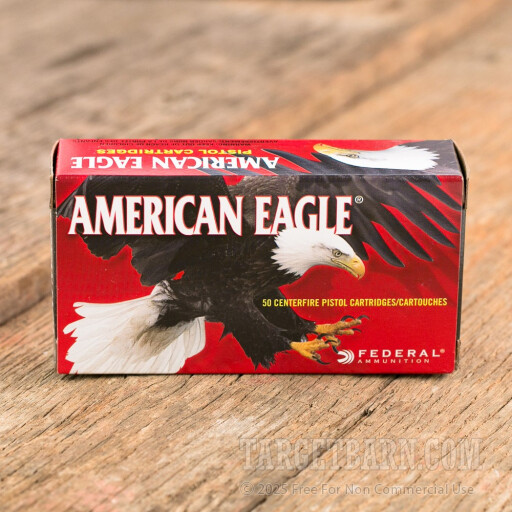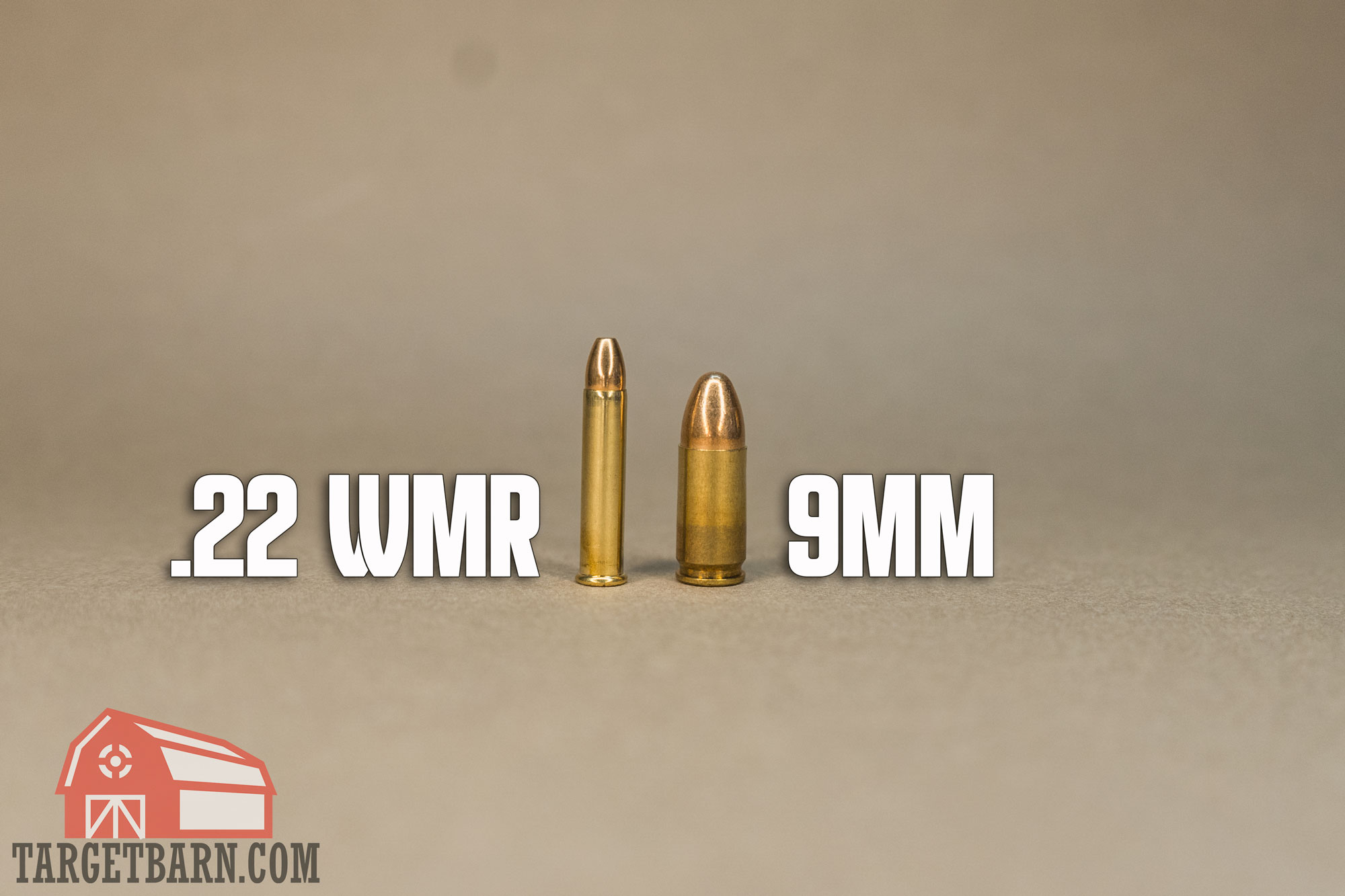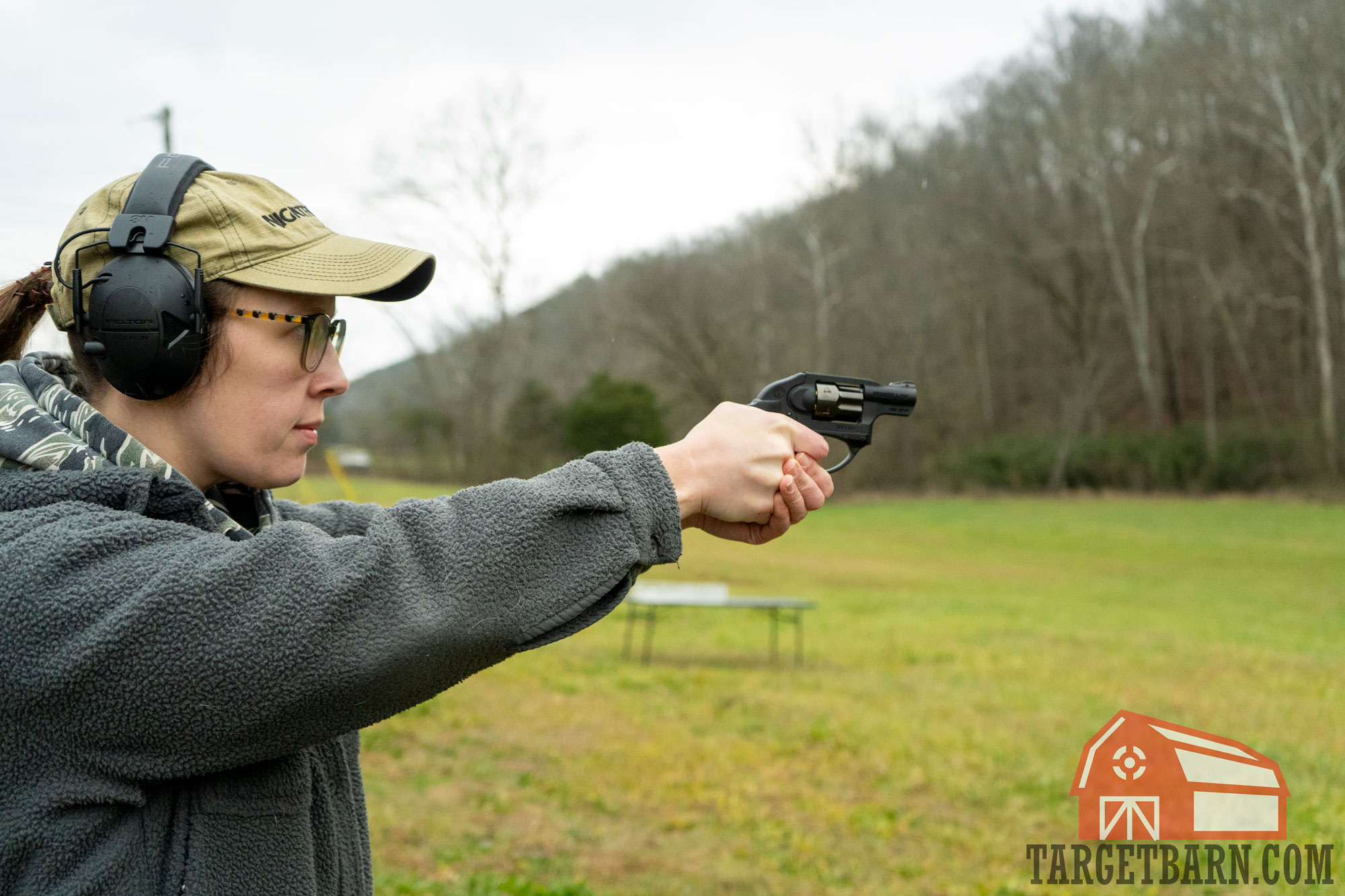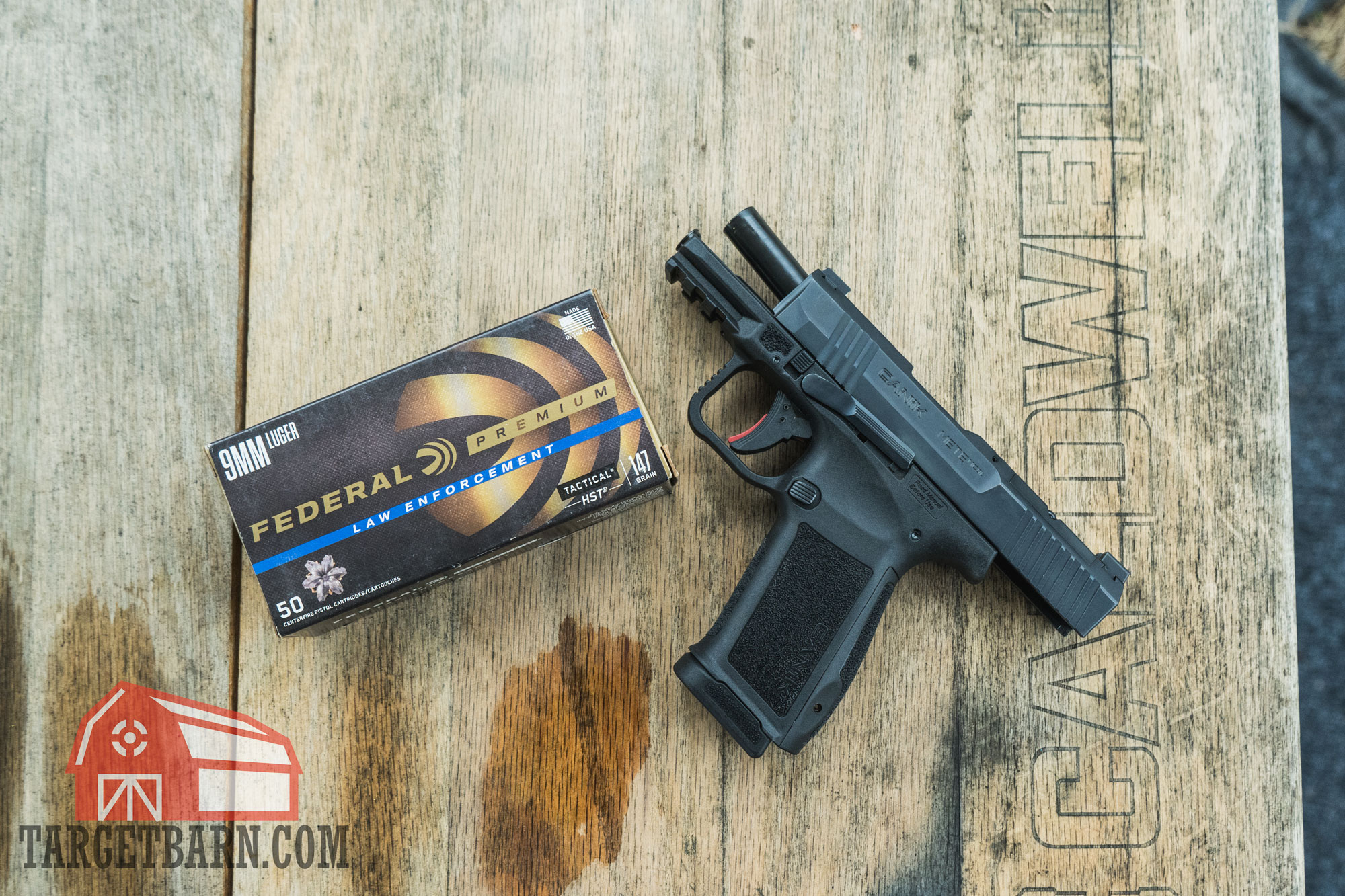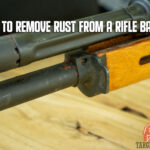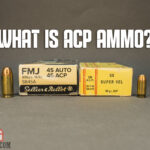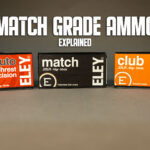If you’ve ever wondered about the differences between the .22 WMR vs. 9mm, you’ve landed in the right place. These two rounds bring different advantages to the table in terms of ballistics, though both rounds are popular choices for self defense.
Keep reading as we dive into our caliber comparison of the .22 WMR vs. 9mm!
Quick Note: The .22 WMR (also known as .22 Mag) is not the same cartridge as the .22 LR. For more info, check out our .22LR vs. 9mm comparison and .22 LR vs. .22 WMR comparison.
.22 WMR vs. 9mm Quick Facts
- .22 WMR is a rimfire round while 9mm is a centerfire round
- The .22 WMR is also known as .22 Mag, .22 Magnum, .22 Winchester Magnum, .22 Winchester Magnum Rimfire
- The .22 WMR uses a fast-traveling, light bullet, while the 9mm uses a heavier bullet that travels slower
- 9mm packs more punch than the .22 WMR
- Snub nose revolvers chambered in .22 WMR are popular for self defense because of their higher capacity and lesser recoil compared to .38 snubbies
.22 WMR vs. 9mm Specifications
| .22 WMR | 9mm | |
|---|---|---|
| Place of Origin | United States | German Empire |
| Designed | 1959 | 1901 |
| Manufacturer or Designer | Winchester | Georg Luger |
| Parent Case | .22 Winchester Rimfire | 7.65x21mm Parabellum |
| Case Type | Rimmed, straight | Rimless, tapered |
| Bullet Diameter | .224" | .355" |
| Base Diameter | .2455" | .391" |
| Case Length | 1.055" | .754" |
| Overall Length | 1.350" | 1.169" |
| Primer Type | Rimfire | Berdan or boxer small pistol |
| Maximum Pressure | 24,000 psi | 35,000 psi |
| Common Pistol Velocities | 1100-1500 fps | 900-1200 fps |
| Common Rifle Velocities | 1700-2200 fps | 1000-1700 fps |
To start, we should note that the .22 WMR also goes by the names .22 Mag, .22 Magnum, .22 Win Mag, .22 Winchester Magnum, and .22 Winchester Magnum Rimfire. These names are used interchangeably, however we most often use .22 WMR and .22 Mag.
Winchester initially introduced the .22 WMR cartridge as a solution to varmints in agricultural settings out of rifles, though revolvers in the caliber were also available. The rimfire round was more powerful and effective than the .22 LR, while being cheaper than centerfire rounds available at the time.
On the other hand, the 9mm is a centerfire cartridge developed by Georg Luger for the German Army who wanted a pistol cartridge larger than the .30 cal.
The visual difference between the .22 WMR vs. 9mm is very obvious. The .22 WMR is taller and skinnier than the 9mm.
The .22 WMR typically uses bullets with weights ranging from 28gr. to 50gr. traveling anywhere from 1100 fps to 2200 fps, depending on barrel length. The 9mm, on the other hand, generally contains bullets weighing between 115gr. to 147gr. traveling at 900 fps to 1700 fps.
.22 WMR vs. 9mm Range Performance
How do the .22 WMR vs. 9mm compare at the range? I hit the range to see how the .22 WMR vs. 9mm stack up in regards to recoil and reliability.
Recoil
If you’re a newer shooter debating between the two rounds, you might be concerned about recoil.
The .22 WMR has less recoil than the 9mm. Even when fired out of a short-barreled revolver, the .22 WMR has fairly light felt recoil and is quite enjoyable to shoot.
Some shooters find that the 9mm’s recoil out of a small handgun can be snappy. This can be mitigated by improving grip strength and technique. While the 9mm certainly does not have the worst recoil out of the popular centerfire handgun calibers, it can still be an issue for newer shooters or those with hand dexterity issues.
Reliability
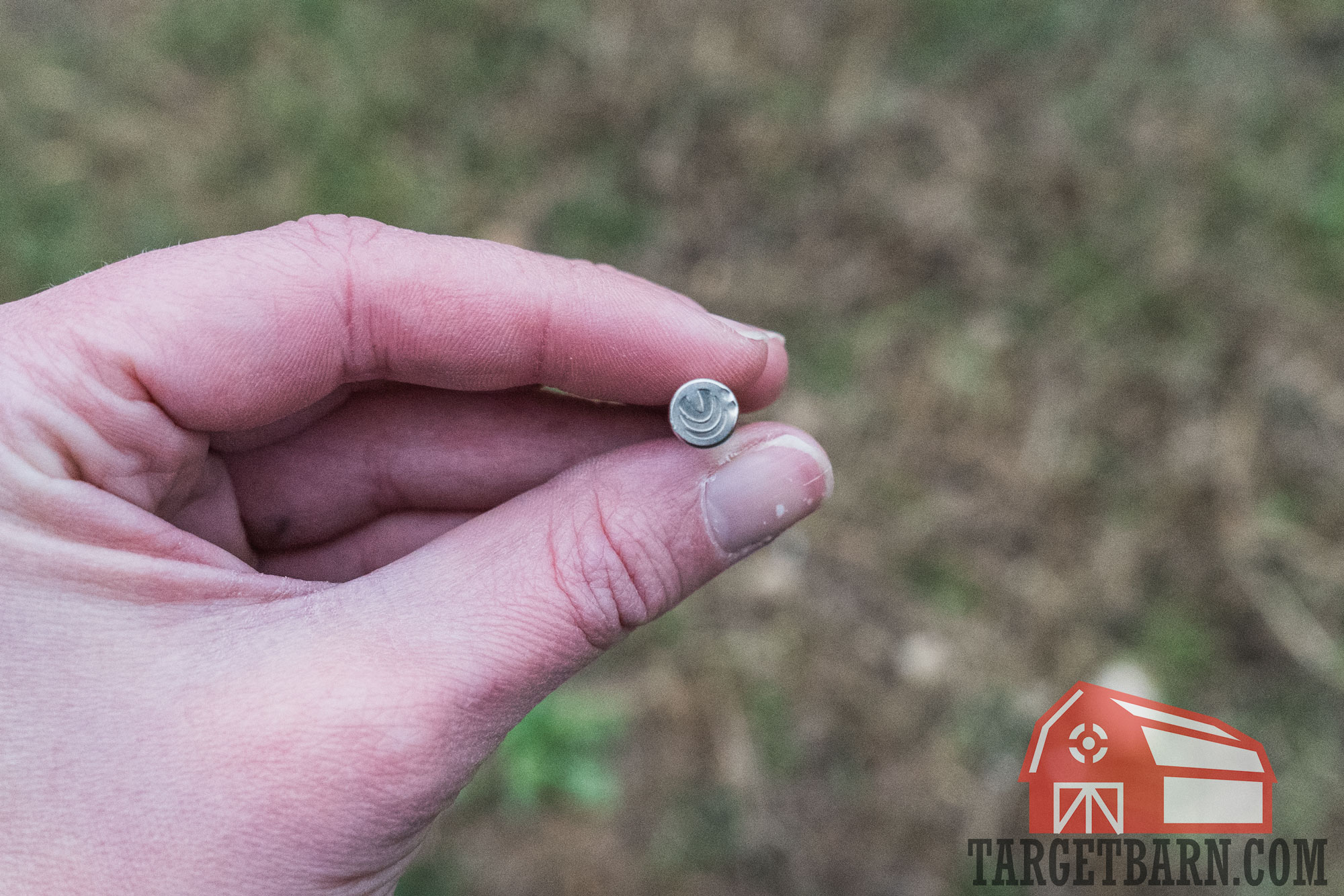
Reliability of the cartridge is another important factor when it comes to comparing the .22 WMR vs. 9mm.
Like the .22LR, the .22 WMR unfortunately has more frequent ignition failures due to its rimfire primer. While testing rounds at the range, I had a handful of light primer strikes when using the Ruger LCR. Modifying your revolver with lighter springs may help fix this issue, but it may also cause other reliability issues.
While, generally speaking, the 9mm is prone to less light primer strikes, it is still not totally infrequent, especially for shooters with weak grips.
.22 WMR vs. 9mm for Self Defense
Now, let’s compare the .22 WMR vs. 9mm for self defense.
While the .22 WMR is traditionally a varmint round for use in rifles, there are many shooters who see its practicality for self defense out of a snub nose revolver. While .38 Special snubbies typically have a capacity of five rounds, .22 WMR snubbies give you six or seven rounds. The round also offers less recoil than the .38 Special, making follow up shots easier.
Shooters often debate about whether rimfire rounds are adequate for self defense. The .22 WMR packs more of a punch than the .22LR and tends to penetrate well in ballistic tests.
The 9mm is one of the most popular self defense calibers. There is a wide variety of 9mm self defense ammo on the market as well as no shortage of handguns in the caliber. The round is generally accepted by experts as an adequate self defense round.
.22 WMR vs. 9mm Ballistics
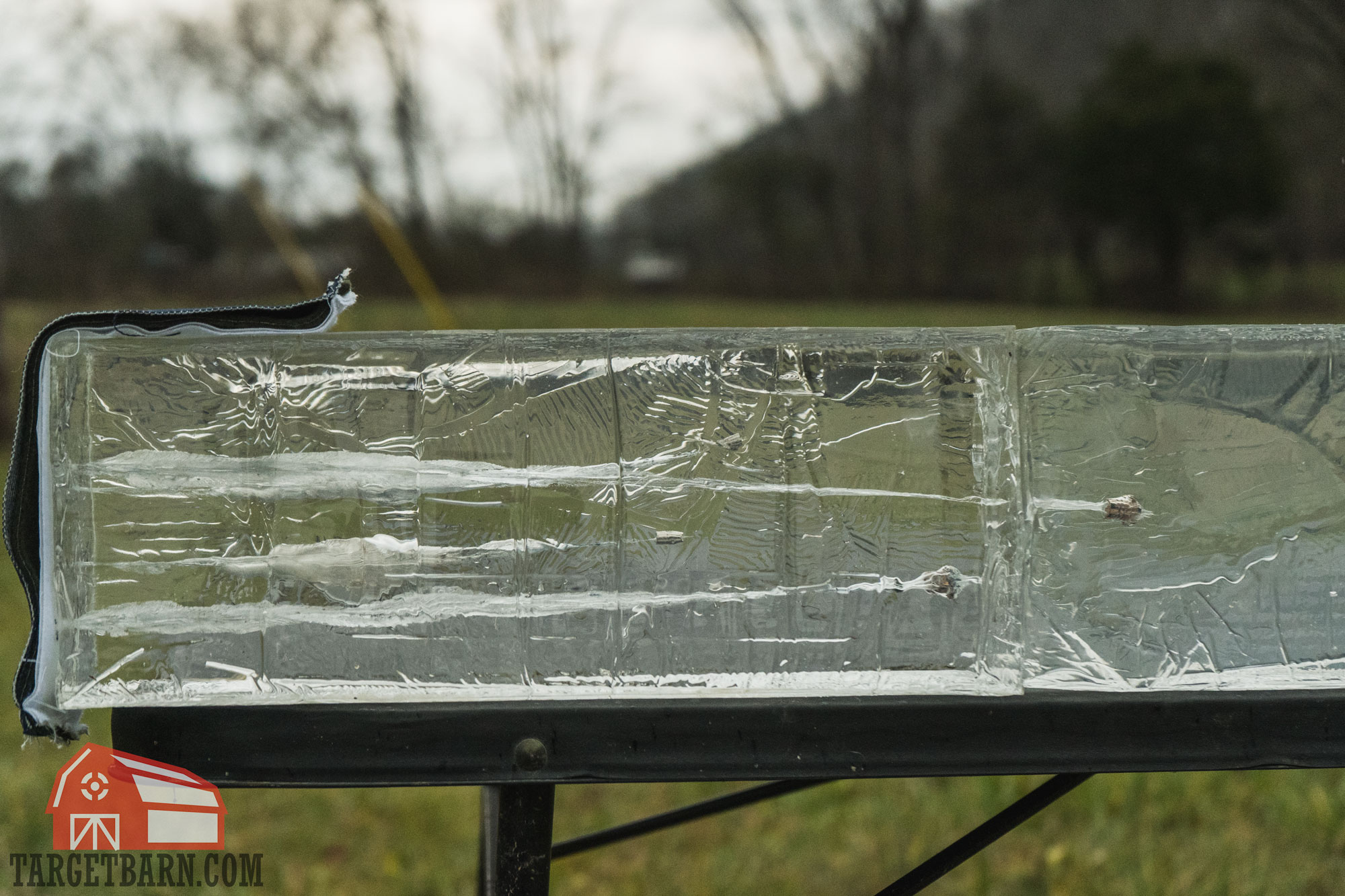
| Ballistics | Gun Used | Barrel Length | 5-Shot Average Velocity | 5-Shot Average Muzzle Energy | 2-Shot Average Penetration | 2-Shot Average Expansion |
|---|---|---|---|---|---|---|
| Federal Punch 45gr. JHP | Ruger LCR | 1.87" | 1131 fps | 128 ft-lbs | 11" | n/a |
| 9mm Federal Premium LE HST 147gr. HP | Canik Mete MC9L | 3.18" | 973 fps | 309 ft-lbs | 16.81" | .594" |
I decided to do a quick ballistic gel test to see how the rounds might perform for self defense.
Using Clear Ballistic’s 10% synthetic ballistic gel, I shot two rounds of each caliber into the gel with a 4-layer fabric cover from a 10-foot distance. I also chronographed 5 shots of each round to get an idea of their muzzle velocity and muzzle energy.
The FBI’s standards call for a penetration depth between 12- and 18-inches as this correlates with rounds that adequately penetrate soft tissue. There is no standard for bullet expansion, but experts generally look for 150% expansion.
.22 WMR Ballistic Gel Test
The .22 WMR ammo we tested is the Federal Personal Defense Punch .22 WMR 45gr. JHP out of a Ruger LCR with a 1.87” barrel.
Federal designed this round specifically for self defense out of short-barreled guns. Unlike normal defensive rounds, Federal designed the Punch .22 WMR round to not expand, instead opting for extreme velocities that penetrate deep enough to hit organs. Because of this, you will see that we did not measure this round for expansion as it is not designed to expand.
The two rounds penetrated just under the minimum of 12-inches we were looking for. This could have just been a fluke, as the round has performed better in other gel tests. However, it is important to note that it may penetrate on the shallow side.
9mm Ballistic Gel Test
We also tested the Federal Premium LE 9mm HST 147gr. HP, a popular 9mm self defense round out of the Canik Mete MC9L with a 3.18” barrel.
As expected, the round easily penetrated between the 12- and 18-inch standard. The bullets also expanded adequately, surpassing the 150% increase we look for.
It should be noted that not all 9mm self defense rounds are created equal. Ammo selection is very important, which is why we suggest checking out our Best 9mm Ammo guide.
Price & Availability
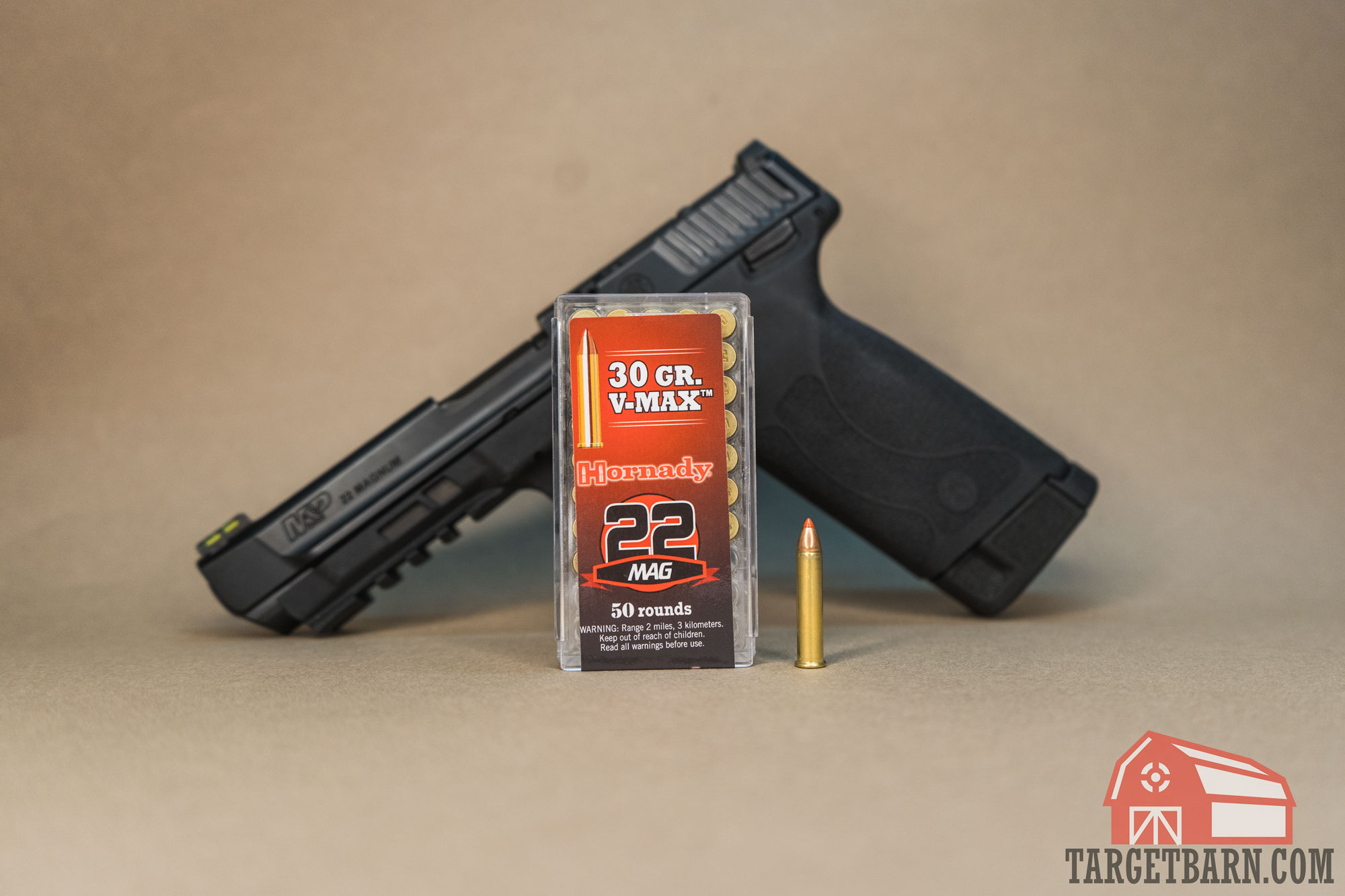
Finally, let’s look at the price difference between .22 WMR vs. 9mm.
As this is being written in 2025, the 9mm and .22 WMR have similar pricing. Of course, the cost of each of these rounds varies depending on manufacturer and bullet type.
Because the 9mm is more popular, there are more ammo options available. In times of ammo shortages, 9mm ammo is typically easier to find than the .22 WMR.
Whichever round you pick, know you can load up with in-stock, top-quality ammo here at Target Barn!

